Songs of the Apocalypse is an ongoing series of oil paintings on canvas, evolving around ideas of family, home, identity, personal trauma and healing. Many pieces are titled after a line from a song. I see music more than I hear it, but it has been a constant thread in my life, especially traditional folk music. So these paintings are responses to songs that in some way define my own life, whether they be old ballads or newer pop songs. A quick Google of the titles (in quotation marks) will find you the songs they reference, and in the words of the songs you'll find pieces of the stories.
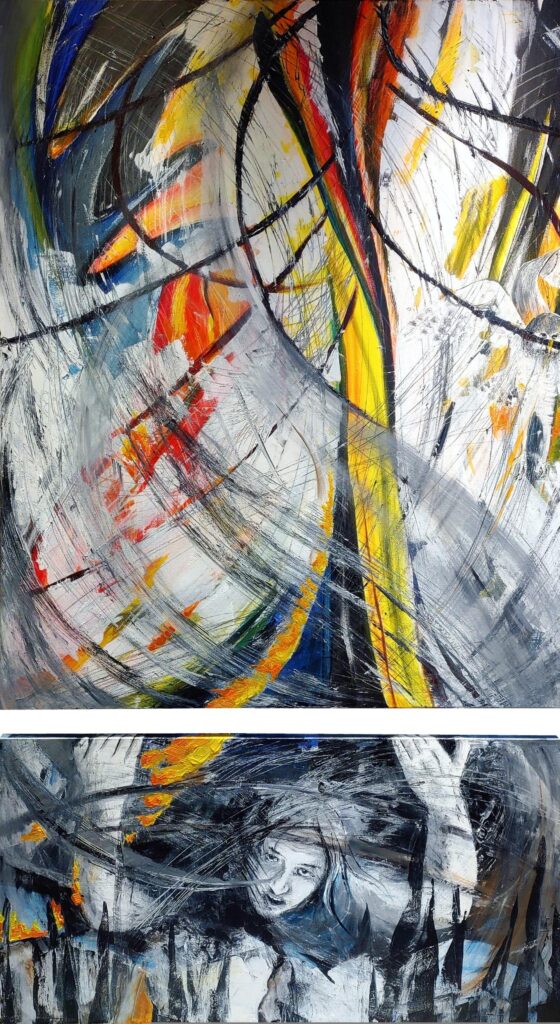
Acrylic, graphite and oil on stretched canvas. 4ft x 8ft Life-size. Referencing the song Drink Before the War, by Sinéad O'Connor, this is my exploration of feelings of impotent rage in the face of apathy towards climate change, and all the related disasters we're facing. I painted them while the Shuswap, where I once lived, is on fire, and I feel helpless. Yes, that's a burrowing owl. They're going extinct due to habitat loss, and what are we doing about it? Fighting fires to save our homes, yes. But our ecology is their home too, and our lives are interconnected. And everything about the way we shut out our eyes and refuse to see is killing us all.
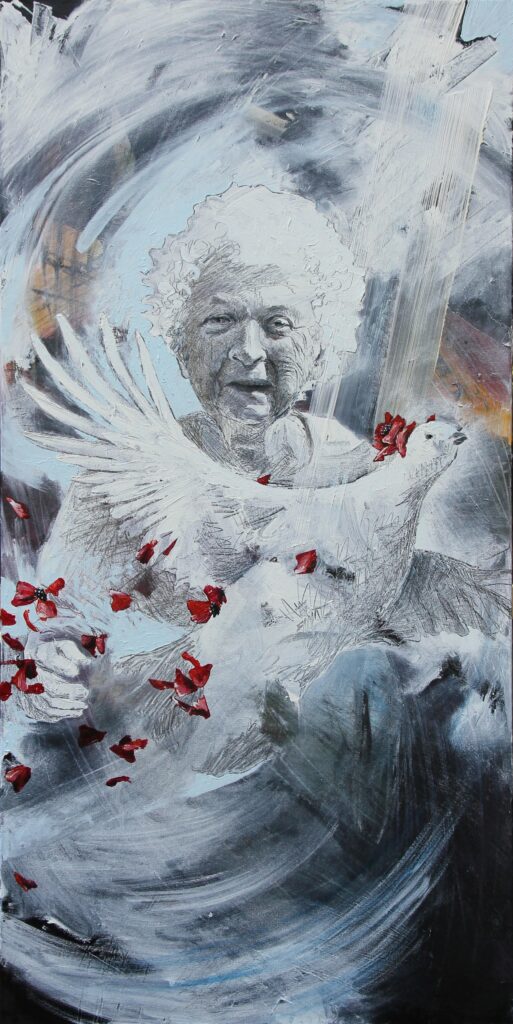
Acrylic, graphite and oil on stretched canvas. 2ft x 4ft Lifesize.
My grandmother was born in the Canadian Rockies to immigrants from Kitsman, Ukraine. Her mother, like a ptarmigan, which lives in both Ukraine and the Rockies, hid up in a tree as her town was destroyed during one of the many wars in Ukraine. She then came to Canada, and had her children, "boom, boom, boom, one after the other", as my grandmother told it. My Grandma spent her lifetime overcoming and freeing herself from the intergenerational trauma caused by war. This is my tribute to her, and my prayer for peace.
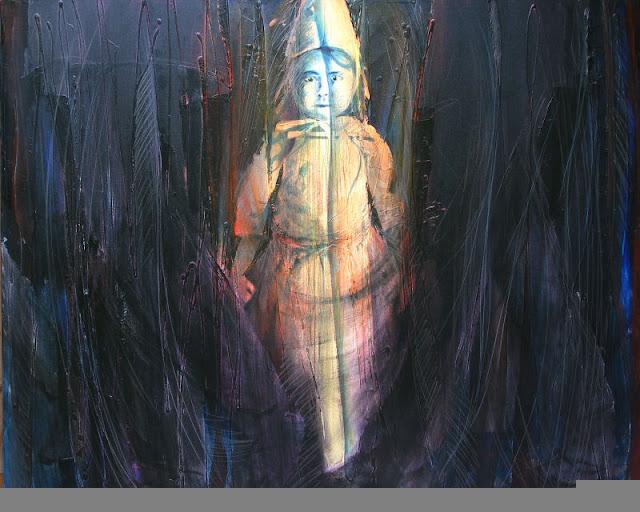
Acrylic, graphite and oil on stretched canvas. 5ft x 4ft Lifesize, and to be hung close to the floor.
This is a portrait of my young friend, who posed for me at her birthday party, insistent on this determined-looking expression. I painted it to Ewan McColl's song, the Ballad of Accounting, as sung by Peggy Seeger.
There is a penchant for us to look to our children for hope in the face of pending capitalist/climate catastrophe, but what are we doing to give our children hope? Children have been begging us to stop climate change since my parents were children, and after a while, they lose hope, and grow into the world we made for them, patting their own children on the heads as they go out to feed the climate-change machine that we all keep building. When are we going to look into those determined little faces and respect their need for a livable future?
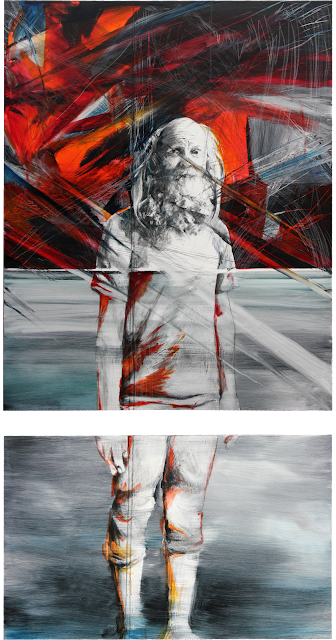
Acrylic, graphite and oil on split stretched canvas. 4×8 ft. This is hung just above the floor, so the subject stands just taller than life-size.
I painted this portrait of my husband to John Lennon's song, Working Class Hero, as sung by Marianne Faithfull. It's about the loss of our souls to workday drudgery; watching our world crumble to capitalism-fuelled climate-change, while our employment feeds the machine, and without our jobs we'd die. So we keep going and returning; going and returning. And when do we have time to build a sustainable future?
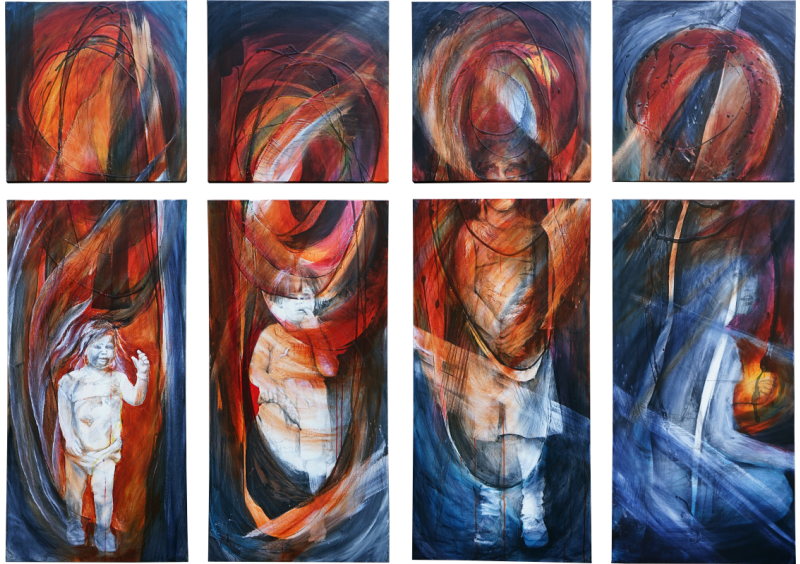
Acrylic, graphite and oil on stretched canvas. 4x 24×72" These are hung just above the floor, so that the viewer sees the upper squares at eye level, and the children on the bottom panels are looked down upon. This piece is titled after a line from Sinéad O'Connor's song Love is Ours, which I used as inspiration during painting.
These are hung just above the floor, so that the viewer sees the upper squares at eye level, and the children on the bottom panels are looked down upon. This is a portrait of my own childhood, at 1, 4, 11 and 16 years. This is, bluntly, a portrait of a child lost in the crossfire of an extremely bitter divorce, and fallout from intergenerational trauma. Maybe it looks bleak, but acknowledgement of the past is the compost from which we grow, and like my parents, I have grown to make some small improvements upon the past. The intention of this piece is to provide space for thinking about children's experience.
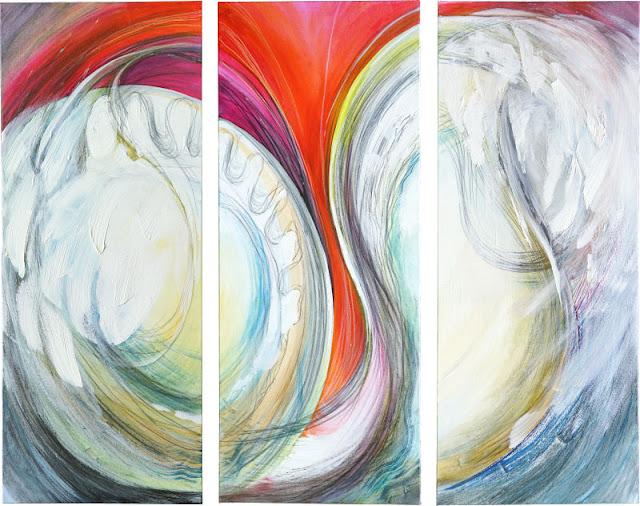
Acrylic, graphite and oil on stretched canvas. 3x 12×48" Painted with permission from Will Champlin, whose song of the same title helped inspire this piece. He wrote the song for his brother, who was dying. I painted this piece about my sister.
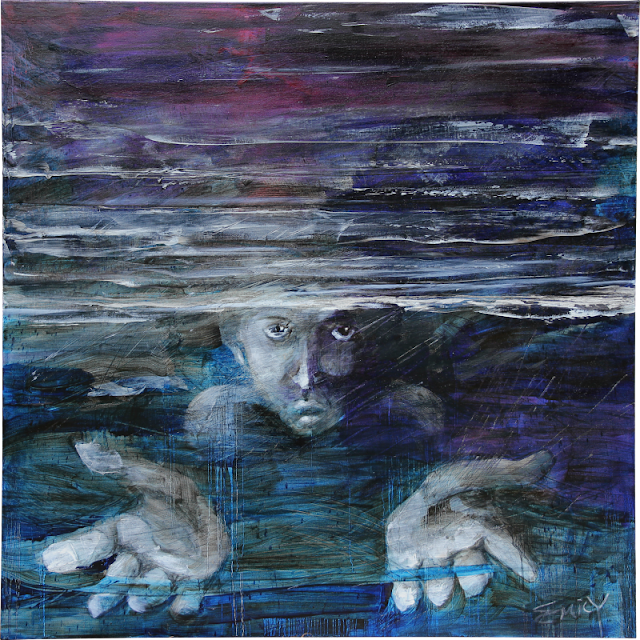
Graphite, wax crayon and oil on stretched canvas.
This is painted to the ballad "The Merry Golden Tree", in which a cabin boy offers to sink a pirate ship, and his captain promises him half his ship and the hand of his daughter in marriage, in return. But when the boy comes back after sinking the pirates, the captain denies him, and he drowns. This is a commentary on how our culture expects our children to fight all our battles (not just as soldiers, but for climate change, social justice, etc.) and then disposes of them.
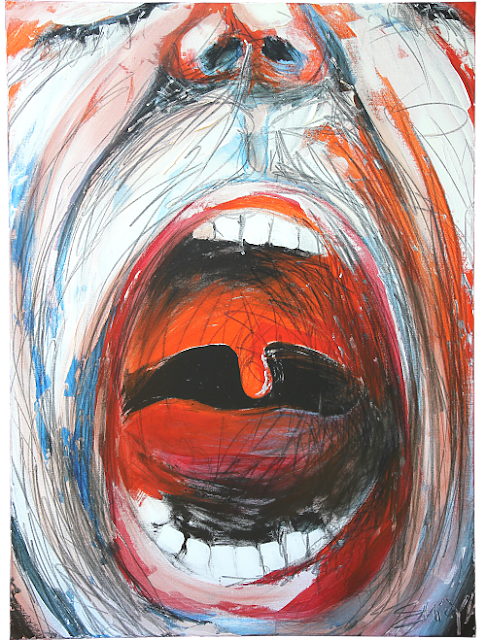
Graphite, wax crayon and oil on stretched canvas.
Just a painting of a dream I used to have most often when I was a child, but still sometimes, in adulthood. Someone is in peril and I'm screaming for help, but nothing comes out of my mouth. Helpless. There's a song from Hadestown, by Anais Mitchell, sung by Eurydice, where she vaguely remembers wandering joyfully through the flowers, and that she was loved, but she exists now in a kind of dream-death in the underworld, bending to Hades' horrific whims. She's lost, and nobody can hear her cry. That basically sums up my time in the basement at my Dad's house. This and other paintings were unexplained for a long time, but now that both of my birth parents have died, I've decided to let something come out of my mouth.
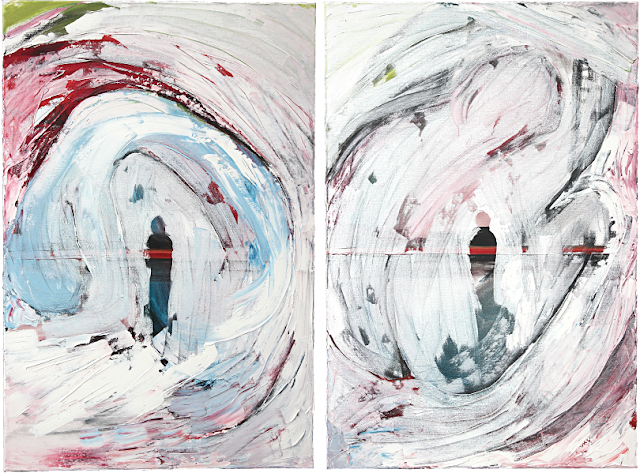
Graphite and oil on stretched canvas.
An earlier piece without a song. This is a painting of my two identities. One who lived in the city at my father's house; one who lived on an island, at my mother's. They might look similar, but they're not the same. And most importantly, they're not connected at all. You could look at one and not know the other existed.
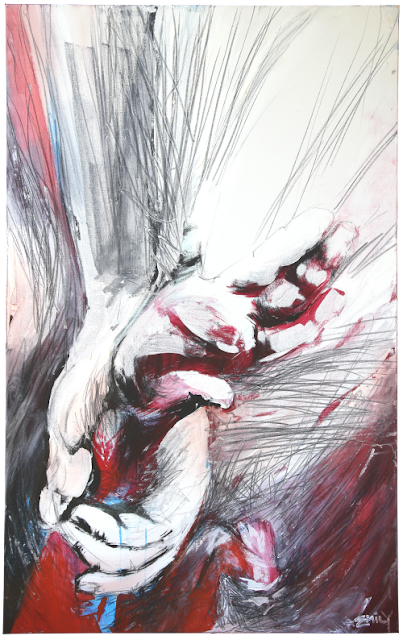
Graphite, wax crayon and oil on stretched canvas.
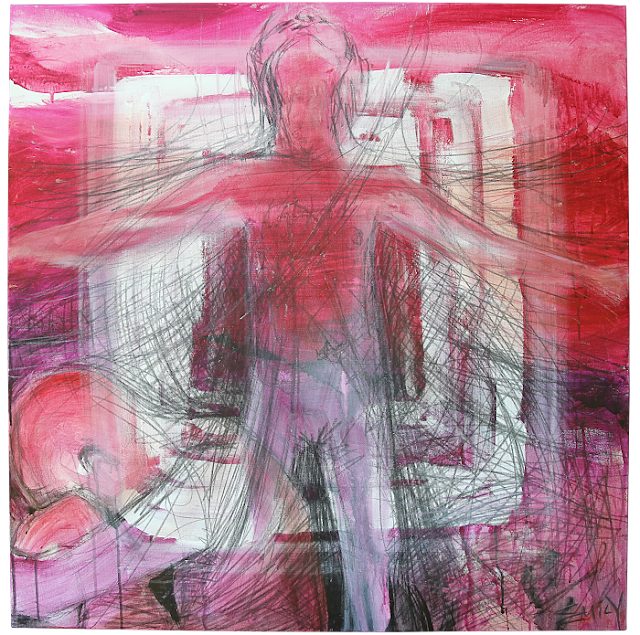
Graphite, wax crayon and oil on stretched canvas.
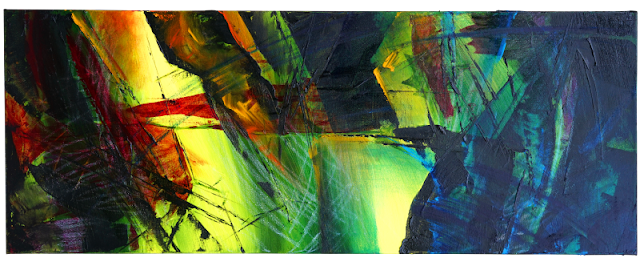
Acrylic, graphite, wax crayon and oil on stretched canvas.
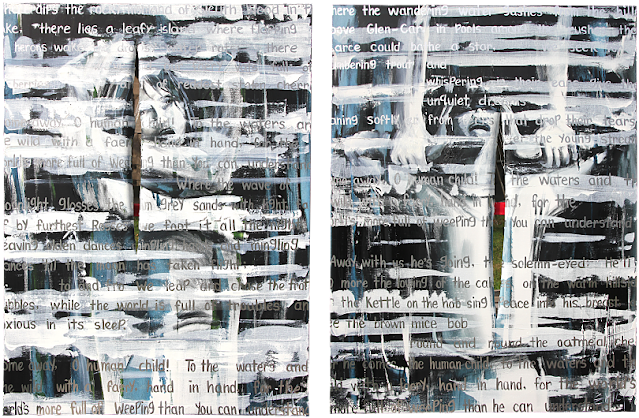
Graphite and oil on stretched & torn canvas. The entirety of W.B. Yeats' poem, The Stolen Child, is written in silver metallic paint on the pair.
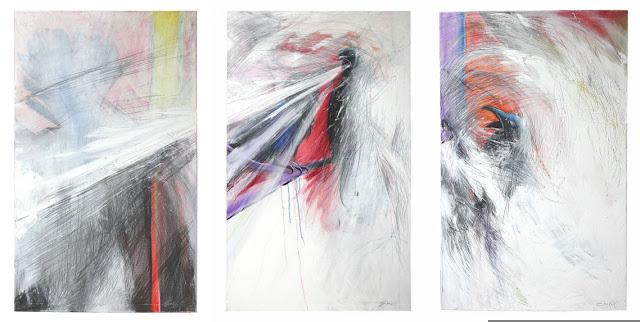
Graphite and oil on stretched canvas. Triptych totalling 10x5ft.
Three craws sat upon a wall on a cold and frosty morning!
The first craw, went to find his ma,
The second craw went to find his pa,
The third craw up and flew awa-,
The fourth craw was not there at all.
This is a depiction of myself and my three sisters!
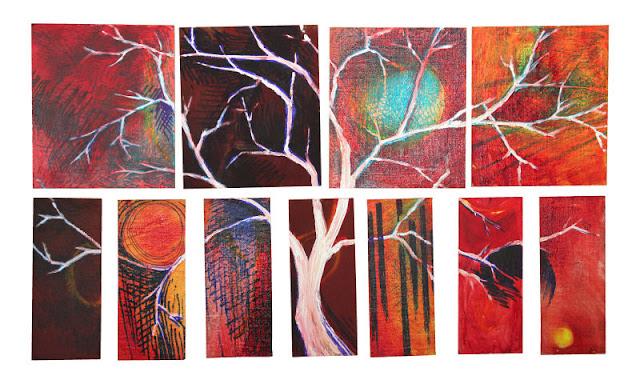
Mixed media on reclaimed BC Binning panels. I was born just four months before Bert Binning died, but his wife Jessie was a dear friend of my parents, and eventually a grandmother figure to me, as well as one of my biggest supporters. Through Mrs. Binning I inherited some of Bert's brushes, his paint palette, and a few panels. I use the brushes often, and finally put the panels to use with this painting. Our civilization seems to be faltering, but I believe it's in growing ourselves up from all the beautiful pieces that we will thrive.